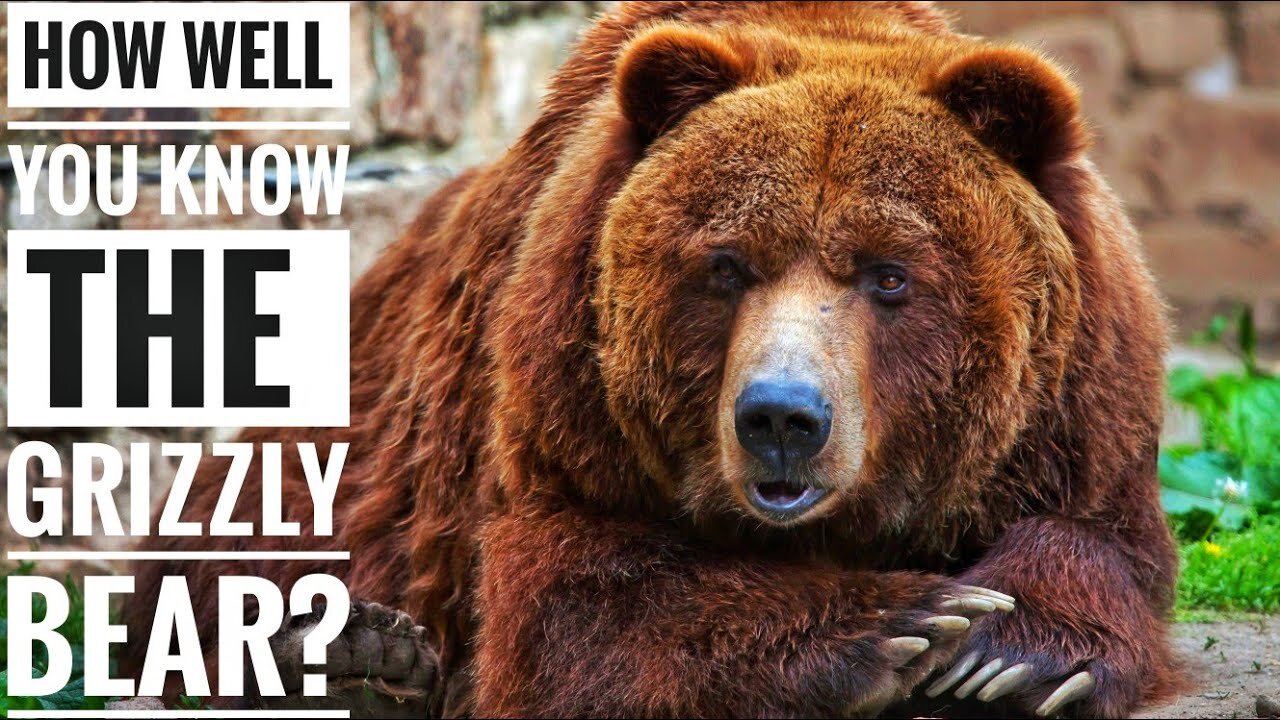Premium Only Content

Grizzly Bear -- Description, Characteristics and Facts!
Description:
Grizzly bears are typically brown in color, though they can range from blonde to almost black. Their fur is dense and often grizzled, giving them their name. Adult males, known as boars, can weigh up to 700 pounds or more, while females, called sows, are generally smaller, weighing around 400 to 500 pounds. These bears have a distinctive shoulder hump, which is a mass of muscles used for digging and foraging. Their powerful jaws are lined with sharp teeth, adapted for tearing through tough hides and meat.
Characteristics:
Strength and Size: Grizzlies are one of the largest land predators in North America, capable of taking down large prey such as elk and moose.
Solitary Nature: While they may tolerate each other's presence, grizzly bears are typically solitary animals, except during mating season or when a sow is accompanied by her cubs.
Omnivorous Diet: Despite being carnivores, grizzlies have an omnivorous diet, feeding on a variety of foods including berries, roots, insects, fish, and mammals.
Hibernation: During the winter months, grizzly bears enter a state of hibernation to conserve energy when food is scarce. They can go without eating, drinking, urinating, or defecating for months.
Territorial Behavior: Grizzlies are known to mark their territories using scent markings and scratches on trees. They can be highly territorial, especially during the mating season or when defending food sources.
Facts:
Despite their massive size, grizzly bears can run at speeds of up to 35 miles per hour for short distances.
They have an incredibly keen sense of smell, which they use to locate food from miles away.
Grizzly bears play a crucial role in their ecosystems as apex predators, helping to regulate prey populations and maintain ecosystem balance.
Conservation efforts have been implemented to protect grizzly bear populations, as they have faced habitat loss and human-wildlife conflicts.
#GrizzlyBear #Wildlife #Nature #Conservation #Predator #NorthAmerica #Biodiversity
-
 1:27:59
1:27:59
Kim Iversen
12 hours agoRFK Jr Declares No More Cheetos on Welfare? | Yale Confirms Long Covid Is Actually Vaccine Injury!
110K126 -
 1:08:43
1:08:43
The Charlie Kirk Show
9 hours agoTHOUGHTCRIME Ep. 74 — Charlie's Campus Return? Robo-Butlers? Garden of American Heroes?
93.1K18 -
 1:09:53
1:09:53
Slightly Offensive
10 hours ago $8.51 earnedIs the US Headed for MORE WAR Under TRUMP? | Guest: Scott Horton
55.9K14 -
 58:29
58:29
The StoneZONE with Roger Stone
9 hours agoRoger Stone Hails Confirmation of Kash Patel, Trashes Schiff for Attacks On Patel | The StoneZONE
62.1K21 -
 48:44
48:44
Man in America
15 hours agoA MASSIVE Global Financial Reset Is Coming—Are You Ready?
49.3K24 -
 1:15:42
1:15:42
Precision Rifle Network
1 day agoS4E5 Guns & Grub - The Best Rifle Under $2000
87.5K9 -
 1:02:54
1:02:54
Glenn Greenwald
1 day agoSouth Korean Economist Ha-Joon Chang on the Economic World Order, Trump's Tariffs, China & More | SYSTEM UPDATE #410
99.9K52 -
 1:02:27
1:02:27
Donald Trump Jr.
15 hours agoBye Mitch, plus Kash confirmed, Interview with AJ Rice | Triggered Ep.218
142K77 -
 1:12:27
1:12:27
The Amber May Show
17 hours ago $3.80 earnedWomen Of Rumble 02-20-25
43.4K9 -
 41:18
41:18
Kimberly Guilfoyle
15 hours agoToday, We Kash in on Equal Justice, Live with Ryan Walters & Daniel Turner | Ep.198
104K23